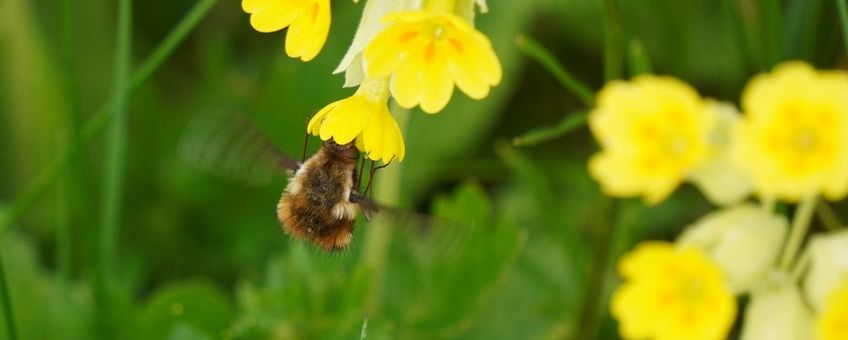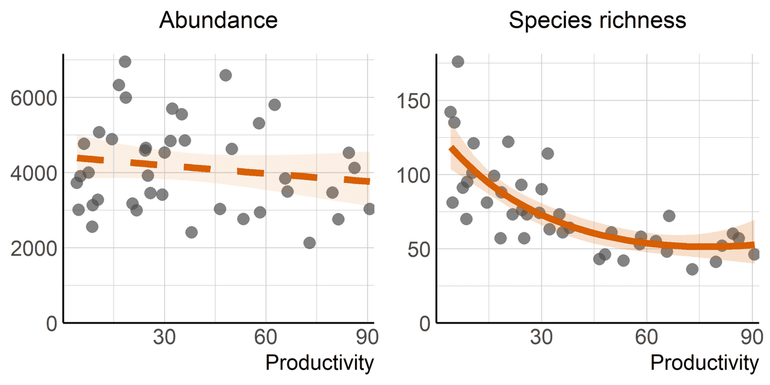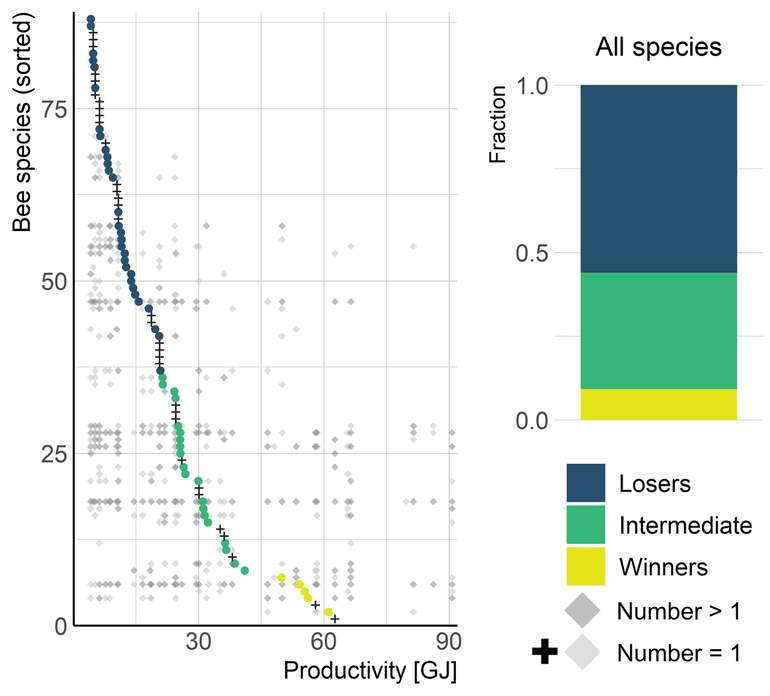
The winners take it all: how intensive land use affects insects
Dutch Butterfly Conservation, Wageningen University & ResearchInsects and other arthropods make up the majority of species on earth, but we still know very little about most of them. Concern about the decline of arthropods has only emerged in recent years. This decline has major consequences, since arthropods play many crucial roles in ecosystems. For example, they pollinate plants, facilitate nutrient recycling, and serve as food for countless other animals.
One of the main drivers behind the loss of arthropods is the intensification of agriculture. But because there are so many arthropod species, it is a huge task to figure out which ones are most affected. Researchers investigated this in grasslands in the south of the Netherlands.
Studying insects in grasslands
“Grasslands are among the most species-rich and most threatened habitats for arthropods in temperate regions”, says Reinier de Vries, lead author of the study. “With the spread of intensive farming, species-rich grasslands have disappeared in many regions. For example, in the Netherlands only a few remnants of this habitat remain.”
The study surveyed 41 grasslands across a wide range of land-use types, from extensively managed species-rich grassland in nature reserves to intensively managed agricultural grassland. This range provided a broad picture of how land-use intensity affects biodiversity. More intensive land use – more fertilization, more frequent mowing, and intensive grazing – boosts grass yields. “By measuring these yields, we could tell how intensively the land was being used”, De Vries explains.

The researchers used sweep nets to sample insects and spiders from the vegetation. They then counted all individual flies, bugs and leafhoppers, bees and wasps, beetles, grasshoppers, and spiders: nearly 170,000 individuals in total. Within these groups, a wide range of families was identified to species level. A total of 520 different species was recorded, some of which have only been observed a few times in the Netherlands.
Equal numbers, but fewer species
There are different ways to assess changes in the arthropod community. De Vries: “We first looked at the total number of arthropods, and found a surprising result: the overall number of arthropods remained stable under more intensive land use. This is caused by an increasing number of flies, which are the most numerous group, whereas most other groups of species declined in abundance. So intensive grasslands are not as ‘lifeless’ as you might think. Many farmers will recognize this, as their fields are often buzzing with swallows that feed on the abundance of tiny flies. But at the same time, we saw that the number of species declined. The most intensively used grasslands hosted not even half as many species as the most extensively used ones.” This contrast between abundance and species richness shows that arthropod counts alone do not reflect changes in biodiversity.

Winners and losers
We need to look at species, but species richness alone (the number of species at one location) is not conclusive either. Species richness does not tell us how large populations are or with which species we are dealing. If extensive grasslands support many unique species, while intensive grasslands are dominated by the same recurring species, the actual biodiversity loss is even greater.
To get a clearer picture, the researchers used a new method. For each species, they determined at which productivity level it was most common (the 'center point' of all observations of this species). This allowed them to identify 'winners' and 'losers': species that increased or decreased in number as land use intensified. The losers strongly outnumbered the winners. Of all species, 56 per cent declined already in the transition from very extensive to moderately extensive grassland. Under further intensification, from moderately extensive to intensive grassland, 85 per cent of all species declined and 64 per cent disappeared completely. Only 9 per cent of all species profited from intensive land use.

In every group of arthropods studied, there were far more losers than could be expected by chance. And in each group – except for beetles – there were also fewer winners than expected. Even though beetle species richness remained stable, this still reveals a loss of biodiversity. Moreover, there was a crucial difference between winners and losers: most losers were found only in grasslands with low productivity levels, while winners were found across all types of grasslands.
This means that when land use intensifies, more and more species disappear, but no new ones take their place. What then remains is a small group of species that profit because they can find more food in intensive grasslands. These winners include generalists with broad diets, as well as species with specific diets that are abundantly available in those grasslands (like decaying plant matter). This small group of species can explain why the total number of arthropods remain high under land-use intensification.
Implications for ecosystems
The high abundance of arthropods in intensive grasslands is good news in some ways – it means there’s still plenty of food available for swallows, for example. But intensive use of grasslands causes a dramatic loss of species. This can have major consequences for ecosystems where all these species have a role to play. Certain groups appear to be especially vulnerable, such as pollinating insects, and larger species that serve as critical food due to their high biomass. Their functions in the ecosystem are under threat. To understand these risks, we need to know precisely which species are increasing or declining.
“The study also highlights the importance of the extensively managed grasslands for biodiversity”, says De Vries. “These habitats support more forbs than grasses, with dozens of plant species growing together. But such grasslands have nearly vanished from intensively farmed regions. Being one of the most intensively farmed countries of the world, the Netherlands provides an example of what impacts can be expected from ongoing agricultural intensification. In recent years, this county has also seen a rise in projects to restore grassland ecosystems. However, most restoration projects only manage to restore moderately extensive grasslands. These are more diverse than intensive grasslands, but not enough for the majority of arthropod species. Restoring the most extensive grasslands is crucial to halt the decline of insects and other species.”
More information
Text: Wageningen University & Research
Images: Reinier de Vries (dotted bee-fly (Bombylius discolor) pays a visit to a common cowslip (Primula veris)); Wageningen University & Research
